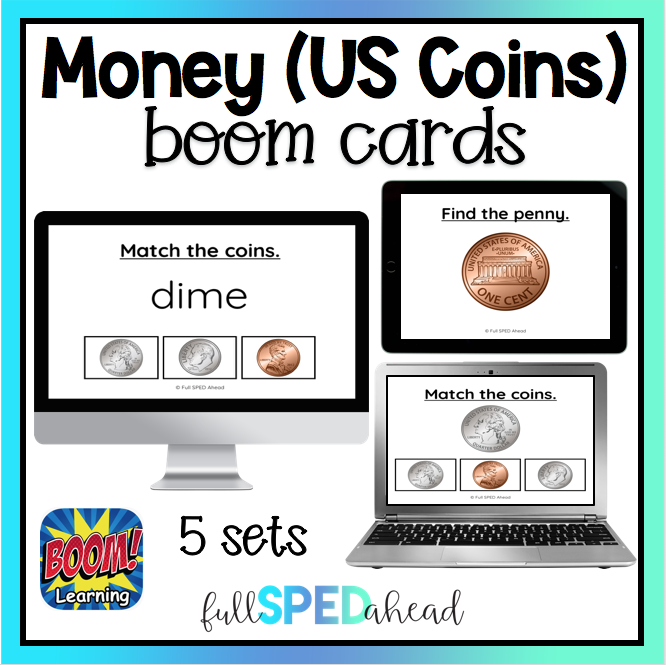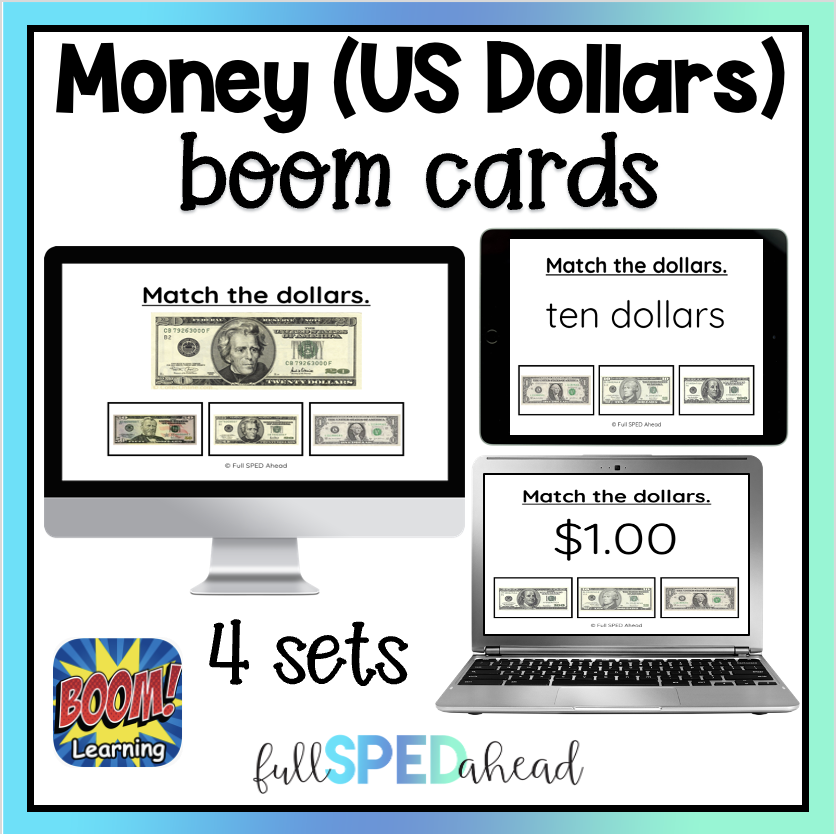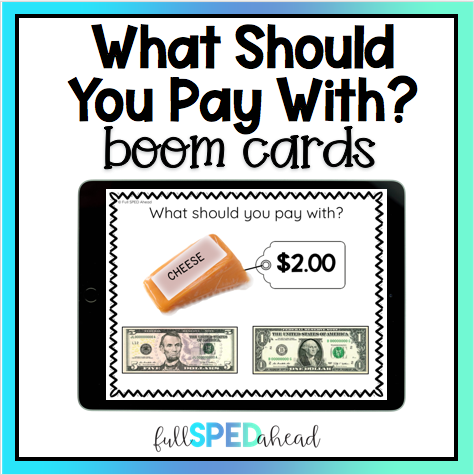Money skills are one of my very favorite skills to teach. We use money every day and it is so meaningful for our students to have this experience as well. Money is fun and functional!
Financial literacy is a vital skill for individuals of all abilities, including special education students. Teaching money skills to these students helps them develop independence, decision-making abilities, and the confidence to manage their personal finances effectively. In this blog post, we will explore the importance of teaching money skills to special education students and provide practical strategies and activities to promote their financial understanding and independence.
Creating interactive, digital resources that incorporate functional skills is so important, especially for my students. I need them to help my students master and maintain important money math skills. Especially for when they go into the real world and have to access money!

This past year we have been unable to take community trips to practice our money skills, which is why interactive digital resources and activities are the next best thing. Students can simulate buying and paying for items and getting change!
Check out my best selling math resources perfect for any classroom! Perfect for students working on basic identification!

Once your students know the value of each coin and dollar, you should start putting it into practice! Knowing that if they have a $5 and a $10 and the item is worth $2, they should pay with the $5 and not the $10. Here is a perfect set to get you started!
Identifying and Counting Coins: Begin by introducing students to different coins and their values. Utilize visual aids, such as large-sized coins or picture cards, to help students identify and count coins accurately. Engage them in hands-on activities, like sorting and matching coins, to reinforce their understanding of each coin’s value.

Making Purchases: Guide students through the process of making purchases by using play money or mock transactions. Create scenarios where students practice calculating totals, making exact change, and understanding the concept of giving and receiving money. Role-play activities, such as setting up a classroom store, provide practical experiences for students to apply their money skills.
Budgeting and Saving: Introduce the concept of budgeting and saving to help students understand the importance of managing their money wisely. Teach them how to set financial goals and allocate their money accordingly. Engage students in discussions about needs versus wants and guide them in creating simple budgets that align with their goals.
Are you looking to help your students continue to build these skills? You’re in luck. This resource bundle I have created includes Interactive PDFs, Boom Cards, Google Slides and Google Forms. There are so many money math skills that can be practiced!

Comparing Prices: Teach students how to compare prices to make informed purchasing decisions. Help them understand concepts like discounts, sales, and unit prices. Incorporate real-life examples, such as comparing prices of items from different stores or online sources, to develop their critical thinking skills and promote smart consumer choices.
Using Technology: Utilize technology tools, such as educational apps or online simulations, to enhance students’ money skills. There are numerous interactive resources available that allow students to practice counting money, making purchases, and managing budgets in a virtual environment. These tools provide engaging and interactive learning experiences for students.
Teaching money skills to special education students is essential for their personal and financial growth. By providing practical and engaging instruction, educators can empower students to understand the value of money, make informed purchasing decisions, budget effectively, and work towards financial independence. Through a combination of hands-on activities, technology integration, community connections, and continuous reinforcement, we can equip special education students with the necessary skills to navigate their financial futures with confidence.
Read more about budgeting skills!
Instagram | TeachersPayTeachers | Facebook | Boom Learning Library | Pinterest
What are you looking for?
COPYRIGHT © 2025 Full SPED Ahead